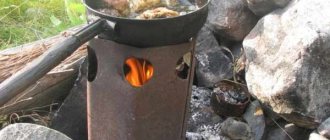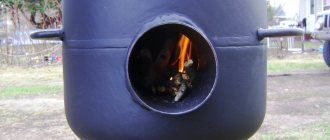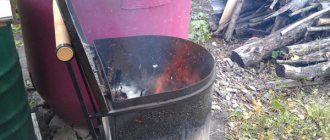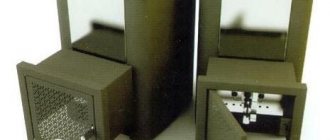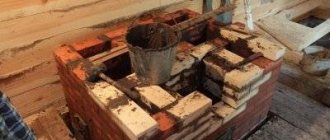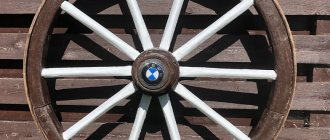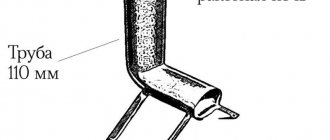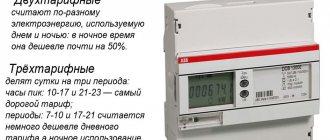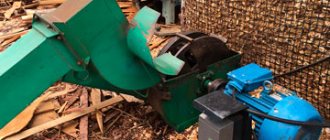A wood chipper is a heating device that runs on wood chips, branches and other similar materials.
Those models that are available in regular and online stores do not always correspond to a given situation.
That is why they are often made independently.
In this article we will show you how:
- choose shape and size;
- choose metal;
- draw up a drawing;
- make oven parts yourself.
Choosing a shape and size
When choosing a shape and size, it is necessary to take into account several parameters , the main of which are:
- firebox size;
- fuel combustion method;
- weight limit;
- size limit.
Firebox size
This parameter affects the amount of fuel that the stove can hold, and therefore the amount of thermal energy it will produce as a result of combustion.
The parameters of the firebox directly affect the efficiency of the heating device in various conditions - the smaller it is , the slower a certain volume of water will heat up .
In other words, a device with a small firebox is suitable for serving by one person. You can boil a mug of tea on it or heat up a can of stew.
more fuel into the stove than the volume of the firebox allows will lead to rapid overheating and damage to individual parts.
To serve a company consisting of two or three people, the most effective volume of the firebox will be 1 dm3, that is, a cube with a side size of 10 cm. For a company of 3-5 people, a cube with a side of 15 cm will be optimal.
These values are only guidelines and do not have to be strictly followed. In addition, even a small stove with a firebox size of 1 dm3, if used correctly, can provide food for 3-4 people without deformation of parts, although you will have to use instant products and spend more time heating water.
Pyrolysis and conventional methods of fuel combustion
There are 2 main ways of burning fuel:
- ordinary;
- pyrolysis.
For normal fuel combustion, it is enough to make the most primitive metal box, which will direct the bulk of the pyrolysis gases and flame upward.
The efficiency of this method of burning wood is low , and due to the high content of unburnt cellulose particles that have turned into soot, the surface of the water container becomes covered with soot and turns black. Therefore, the only advantage of the conventional combustion method is the simplicity of the design of the heating device.
, thermal decomposition of wood occurs with a partial lack of air and a small amount of fire.
Then, in the so-called pyrolysis block, the smoke is mixed with secondary air, which enters through the holes in the stove body, and afterburning occurs. That is, part of the carbon monoxide (carbon monoxide), which is formed during the thermal decomposition of wood, is converted into carbon dioxide with the release of thermal energy.
With this burning method, the cellulose that makes up the wood burns more completely, releasing more heat , so less fuel is needed to heat the same amount of water.
In addition, the pyrolysis method is better suited for raw wood, but the main type of fuel for such stoves is what can be picked up underfoot, that is, branches, bark and cones, which in most cases have a fairly high humidity.
Weight and size limit
Those who have gone on multi-day hikes over long distances know how much stuff and food they need to take with them, and understand the importance of every extra gram. For such tourists, the weight of the wood chip stove is the determining factor.
The weight depends not only on the design and size of the heating device, but also on the thickness of the metal from which the stove was made. Therefore, you have to choose between the thickness of the metal and the weight limit.
The thicker the metal, the easier the stove can withstand accidental overheating (this is only true for steel, so parts for titanium camping heaters are made very thin, that is, 0.4–0.6 mm).
On long hikes, it is very important to use the most compact things possible, because the volume of a backpack is limited, and you need to take a lot with you.
In such conditions collapsible devices are preferable , because when folded their size does not exceed the dimensions of a not too large book or tablet.
However, this type of heating device is noticeably more difficult to manufacture and slightly less efficient. If there is no strict size limitation , then it is better to choose a non-collapsible or partially collapsible design.
Use with army bowler hat
Various soldiers' bowler hats, both still in service with the Russian army and airborne ones, are very popular among tourists. Foreign military and tourist bowlers are also often used.
Each of the kettles has a certain shape, so you have to select either a stove for the kettle, or, conversely, a kettle for the wood chipper.
When selecting a heating device and cookware, keep in mind that maximum efficiency will be achieved when the container is completely placed on the device.
Moreover, the distance from any of its edges to the edge of the wood chipper does not exceed 5 mm . If the pot is larger than the stove, it will take longer to heat and boil the water.
If the heating device is larger, then some of the wood chips will be burned in vain , and you will also have to carry extra weight with you.
For traveling by car, this is not critical, but for long hikes, where you have to carry everything yourself, every extra gram turns out to be very important.
After all, you have to choose - either take with you a wood chip that is too large, or a few extra tablets of dry fuel, or some other equally important supply. The exception is models on which you can install 2 containers or a large pan of water at once.
Many manufacturers immediately indicate on their products that this wood chip stove is suitable for an army cauldron.
Main types of homemade stove designs
Here are the main types of structures :
- non-removable;
- partially collapsible;
- completely collapsible.
The advantages of a non-separable design are maximum rigidity and strength , the main disadvantage is the large size. A partially collapsible oven consists of several blocks, so its strength and rigidity directly depend on the same parameter of each block.
Fully dismountable in transport condition it takes up little space , but its rigidity and strength are not only noticeably lower than the same parameters of the two previous designs, but also directly depend on the quality of workmanship.
Based on the type of fuel combustion, these devices are divided into 3 main designs:
- traditional;
- with lower secondary air supply;
- with upper secondary air supply.
The first consists of walls and a bottom, so its design is the most primitive and easiest to manufacture. The second is noticeably more complicated, because it is formed from outer and inner buildings installed on a common bottom. Secondary air, which did not enter through the grate holes, freely passes between the outer and inner casings.
The best ready-made models
Ready-made stoves can be purchased on any suitable website or in construction stores. Another interesting solution would be to buy a stove from the well-known website “Aliexpress”.
Turbo oven PS1500T
This option showed excellent results at low temperatures.
The stove does not require large supplies of firewood and saves a lot of time and effort. The blower in the furnace system allows you to gain high power in a matter of minutes. Even raw wood can be used as fuel.
The PS 1500 T turbo stove kit includes the following parts:
- electric air blower,
- stainless steel housing,
- the combustion chamber,
- stand.
The supercharger runs on two AA batteries. Operation is possible in three modes:
- High fan speed (3000 rpm).
- Low fan speed (1500 rpm).
- Off – when switching off, the supercharger must be removed to avoid overheating. In this case, the oven will continue to operate thanks to natural draft.
On one set of alkaline batteries, in different modes, the oven will work for about 50 hours.
The price range of the PS 1500 T turbo oven is 2500-3000 rubles.
Forest gnome
This is a compact, prefabricated oven. To assemble and disassemble this option, no tools are required. The oven is made of high quality stainless steel.
The main advantage of the “Forest Gnome” is its versatility. The unit is equipped with three grate compartments. Low for wood fuel, medium for alcohol. The upper compartment is used for dry fuel.
Advantages of the “Forest Dwarf” stove:
- The grate rises above the ground, providing air access to the flame.
- It is also noteworthy that the design can be supplemented by installing walls for pyrolysis.
- This version of the folding stove is safe to use, because its design is a closed space.
- There is no need for a large supply of firewood; you can use any forest debris, including cones.
- Quality of materials. The thick food grade steel used to create the oven will last a long time.
- The set of the “Forest Gnome” stove includes a folding stove and a cover. The cost of the device is about 1000 rubles.
Biohit 123
- This stove is a non-separable structure that can be used as a stand-alone stove.
- The equipment is supplemented with special crosshairs.
- The structure consists of three parts:
- The first part serves as a stand and is necessary for stability.
- The second part is the firebox.
- The third part is the second crosshair on which the dishes are installed.
- In the combustion part there is a tray for wood fuel. The design also has an additional slot with a door for storing firewood.
Advantages of the Biohit 123 stove:
- No assembly required.
- Always ready to work.
- Long service life due to bent structure.
- The stove can be used as storage for small items.
- An additional fuel tray is included in the package.
- Dry fuel is suitable as fuel.
One of the disadvantages of the stove is its inconvenient dimensions.
The cost of a non-separable stove Biohit 123 varies in the range of 1500 - 2000 rubles.
Survivor #2
- This option has a large set of positive qualities:
- The continuous operating cycle is 10 hours.
- Long service life.
- The ash pan is designed like a full-fledged stove. Equipped with a large door.
- An improved type of fastening that increases the strength of the structure.
- The volume of the installed container is up to 30 liters.
- Due to the high efficiency coefficient, fuel consumption is minimized.
- Convenient system. The door is equipped with grooves made in the form of a slide. Therefore, the door can cover both the firebox and the vent.
- It is worth noting the material used to make the stove. The stainless steel alloy contains nickel and is non-corrosive. The product is resistant to various chemical environments. Also, the wood chip stove “Survivalist No. 2” has high mechanical loads.
- The price of the stove is about 1000 rubles.
Biolight
- The device represents an innovation in the market for similar products. The stove is equipped with an electric generator, which allows you to charge various equipment via a USB connector. In addition, the stove perfectly copes with its intended purpose. The oven is easy to carry and convenient to use.
- The furnace structure consists of a combustion chamber and a power supply. In portable conditions, the unit can be placed inside a metal combustion chamber, which increases mobility.
- The combustion chamber is double-walled, which indicates the reliability of the design. Thanks to the double structure, the outer side will heat up much less.
- At the bottom of the stove there are folding legs. During operation, they do not heat up much, which allows you to handle them with your hands if necessary.
- The power supply is made from thick-walled, fire-resistant plastic.
- Operation of the Biolight wood chip stove is possible in slow and fast modes. The second option is only available after the oven has heated up. The stove is controlled using one main button. An additional convenience is the presence of a USB connector through which you can charge the battery and other devices.
- The cost of the Biolight stove is about 10,000 rubles
Selecting a housing type
All stoves can be divided into:
- rectangular;
- round.
rectangular because the parts for this shape are easy to manufacture.
Round ones are more difficult to manufacture, so they are made from ready-made cylinders or glasses made of a suitable metal.
Even if a round heating device is made collapsible, in transport condition it will always be noticeably larger than a rectangular one.
Does it make sense to take it on hikes?
Not all tourists prefer to take wood chips with them, because a gasoline or gas stove is much more efficient and will heat water faster.
Therefore, some tourists perceive these devices as an exotic toy that they can show off to their friends, but have nowhere to actually use.
However, on multi-day hikes with a small group (2-3 people) or alone, this heating device is more effective than other stoves.
After all, the fuel is lying under your feet, which means you don’t have to carry it with you. In addition, gas or gasoline will sooner or later run out, but forests and even open forests will always provide fuel for this device.
Material selection
For the manufacture of wood chip stoves, acid-resistant and heat-resistant steel grades are used , because they not only tolerate high temperatures well, but are also resistant to condensation that forms during ignition.
This metal is used for the internal lining of furnaces and boilers, as well as for the manufacture of drums and internal casings of washing machines.
Air ducts for ventilation systems are often made from this steel, but you need to be careful not to confuse it with galvanized steel, which has much worse characteristics and releases zinc when heated, which can lead to poisoning.
also necessary to choose the right metal thickness . After all, the thinner the part, the less rigid and durable it will be (even if it weighs less), but at the same time it is noticeably easier to process. And the thicker it is, the stronger the structure will be, but the greater its weight, and the processing will be noticeably more difficult.
Therefore, most often for home-made stoves, stainless steel with a thickness of 1–1.5 mm is used , although both thinner and thicker metal can be used.
As a basis for the manufacture of round heating devices, you can use spoon dryers of various diameters , made of food grade stainless steel.
Such dryers can be bought on AliExpress and other sites for a low price. Metal thermoses are well suited for creating pyrolysis stoves , because they are also made of stainless steel.
However, they are quite difficult to drill due to their round shape and the inability to use a drilling machine, and for complete pyrolysis, the air flow in the combustion zone should be minimal, and in the afterburning zone located above the combustion zone, maximum.
Often, various steel containers are used to make wood chippers , such as:
- saucepans;
- mugs;
- pots;
- banks.
The main selection conditions are :
- heat resistance;
- acid resistance;
- compliance with the size and shape of the water container that will be installed on top.
What can be used as fuel?
These heating devices are omnivorous and are able to work both on wood waste , that is:
- wood chips;
- shavings;
- sawdust,
and on forest debris , that is, cones, branches or pieces of bark.
In this case, at least 75% of the fuel must be chopped or crushed wood , the minimum dimensions of which are:
- length 4 cm;
- width 1 cm;
- thickness 0.5 cm.
The maximum fuel dimensions are limited only by the volume of the firebox - when fully loaded, it must accommodate at least 5 fuel cells.
If there are fewer of them, they will not burn efficiently. Instead of chopped wood you can use cones if they are the right size.
Also suitable as fuel:
- dry leaves;
- dry pine needles;
- dry or fresh bark;
- stems of bushes.
Manufacturing
The manufacturing technique for different types of wood chip stoves is different , but often the same operations are used in the manufacture of structures of different types. Therefore, we will talk about each operation, and also give a sequence of actions for various types of these devices.
This will allow you not only to manufacture devices for which there are descriptions and drawings with dimensions, but also to develop your own models.
After all, often through experimentation it is possible to create something much more effective than what is described on forums or found on the Internet.
But to start making it by reading forums where homemade wood chippers and everything connected with them are discussed. In addition, it would not hurt to read discussions regarding the experience of using purchased stoves, because from there you can glean many interesting ideas or unusual solutions.
Here is
a list of the most popular and authoritative forums where these issues are discussed:
- Yaplakal;
- Popgun;
- Khabarovsk Cyclists Forum;
- Vestigator;
- Velopiter;
- Center for the Study of Adaptive Skills;
- Theron.
Manufacturing of parts for rectangular devices
First you need to make a full-size mock-up of all the parts from thick hard cardboard. This will help you more accurately determine the shape of each part, as well as the size and shape of the mounting slots and protrusions.
When making parts from cardboard, do not make holes in them, because they will weaken the material and you will not be able to assemble the structure properly. Having decided on the shape of each part and checking them using assembly, the cardboard sample is placed on a sheet of metal and the contours are marked .
To cut stainless steel or tool steel at home, use :
- grinder (it is necessary to constantly water the contact area between the disc and the metal with water);
- special guillotine shears (not to be confused with ordinary metal shears);
- jigsaw (use a special blade and set the speed as low as possible).
You can cut along the contour of the plate in any way, but the slots for assembling the parts will have to be made with a jigsaw, because guillotine shears are not intended for such work, and the grinder makes too wide a cut.
If there are burrs , they are removed using :
- sharpening machine;
- flat file;
- flat file.
When all the parts are ready, holes are drilled using carbide drills for hardened metal . Moreover, you need to drill at low drill speeds so as not to overheat the plate or drill. If you set the speed to medium, then the contact point between the plate and the drill will need to be watered to reduce the temperature and protect against overheating.
Manufacturing of round furnaces
Most often, various stainless steel containers are used to make round (cylindrical) wood chips. First, a drawing is drawn up or a full-size mock-up is made, on which the location, shape and size of the holes are determined. Then they transfer the holes for the holes to the container and drill them.
In most cases , you have to drill containers using a hand drill , because due to their large size and round shape, they cannot be properly secured to the bed of a drilling machine.
Therefore, the holes for the holes are first punched with a sharp core and drilled in 2-3 steps, gradually increasing the diameter of the drill.
To create the maximum pyrolysis effect, the holes in the lower part of the active combustion zone are made minimal , then gradually enlarged, making them maximum (the size depends on many factors, it must be selected individually) in the upper active combustion zone .
In the afterburning zone, the diameter of the holes is reduced to a minimum (1–2 mm) as you move towards the upper part of the stove.
It is advisable to cut a rectangular hole for storing fuel , and the cut piece of metal can be used as a door.
Rings made of rigid steel wire with a diameter of 0.5–2 mm can be used as canopies.
If a container is used to make a stove into which a container of water will be inserted, then chimney holes must be cut in the upper part. For structures where there is 1–2 cm of free space between the edge of the stove and the water container, such holes are not required.
a stainless steel thermos is used as a base , then in addition to the fuel door you also need to cut out the ash pan door, the width of which is slightly greater than the distance between the outer and inner casings, and the length is equal to ¼ of the circumference of the casing.
The door needs to be secured to a pair of hinges made of paper clips or steel wire and some kind of retainer installed. However, you can do without a door, leaving the ash removal hole open.
Then in the bottom of the inner casing you need to drill 3-5 holes with a diameter of 10 mm , through which the ash will pour out. In the upper part of the thermos you need to cut chimney holes, the size of which depends on the height of the side.
If its height is 2 cm or more, then the total area of the holes should be half the area of the side. With a side height of 1.5 cm, the total area of the holes should be 2/3 of the side area , and with a height of 1 cm, the total area of the chimney openings should be ¾ of the side area.
It is desirable that the holes go all the way to the top, but you can leave a side 1–3 mm high. If you make it larger, the stove will effectively heat only containers whose diameter is at least twice the diameter of the rim.
cutlery
drainer or a piece of thin-walled pipe is used
as a base the grate bars can be made from screws , the length of which is 40–45% of the inner diameter of the pipe.
Holes for bolts are drilled at a height of 2–3 cm from the bottom of the pipe, their optimal number is 6–8 pieces.
When the holes are ready, the bolts are inserted from the outside and secured from the inside with nuts and locknuts.
In the pipe below the grate, you can drill 2–4 holes with a diameter of 5–10 mm, thanks to which the combustion process will continue in an economical mode even with the door completely closed. If the stove has an afterburning chamber, then the number and diameter of the holes can be reduced by 2 times.
How to do it on a hike?
If the standard stove is out of order, and there is no access to plumbing and welding tools, then you can make a wood chipper from any tin can. It will not last long, but it will last for 1-2 weeks.
To do this, the lid of the jar must first be cut lengthwise with a penknife or hunting knife , and then cut in a circle so that you get 2 petals connected to the jar with legs 3–4 cm wide.
Then these petals are unbent and the contents of the jar are removed, after which a platform for heated containers is formed from the petals. When the site is ready, you need to make holes in the sides of the can for air flow . This operation can be done using a bottle opener or a knife.
The size and diameter of the holes are selected individually, but do not be afraid, even if there are too many of them, or they are too large, the stove will still successfully cope with its tasks.
The only disadvantage of this design is that it can only heat a small volume of water due to the impossibility of adding fuel .
If one stowage is not enough, then instead of holes for air flow, a door for stowing fuel is cut out with a knife, which is then bent downwards so that it serves as an additional support.
Turbo stoves
In stores you often find turbo stoves, that is, ordinary wood chippers with forced air supply. Their main advantage is that they work well even on raw fuel .
To make them you will need :
- a small diameter tin can (you can use a metal mug or a thin-walled pipe);
- electric motor from DVD drive;
- steel wire with a diameter of 1–2 mm;
- copper flexible insulated wire;
- box for AA or AAA batteries (can be bought in a store or removed from some device);
- AA or AAA batteries (the larger, the longer they will last).
The bottom of the can is cut off, then a multi-blade propeller is made . The number of blades does not matter; their deflection angle is 10–15 degrees. The size of this propeller should be slightly smaller than the internal diameter of the turbine housing , i.e. a tin can, pipe or mug.
The main problem in making this device is that the tin propeller is difficult to fix on the tin shaft. After all, there is a source of high temperature nearby, and the size and weight limits do not allow making the pipe too long.
When the fan unit is ready, it is joined to the stove body, positioned under the grate. If the distance from the grate to the ground is less than the diameter of the turbo, then a new housing or adapter is made that increases this distance and connects both blocks.
If the turbocharger is connected to a thermos stove, then the grate bars are raised to the level of the motor shaft, and the bottom of the fan pipe is installed at the level of the bottom of the inner housing.
A little history
A small wood chip stove was developed by Russian gold hunters in Chukotka. At that time, Alaska had already become part of the United States, but the share of Russians remained large. Therefore, the first mentions of the wood chipper are listed as the Russian can stove or Russian Can Stove, including in the novels of Jack London.
Prospectors invented it from cans of American canned food and, to escape the frost, warmed up their food. Later, prisoners from Stalin's times and guards from the NKVD learned about wood chipping as a means of survival. However, the idea of a simple mini-stove became most widespread after the release of one of the parts of the James Bond film.
Since the days of gold miners, the idea of a Russian can stove has saved the lives of thousands of people, and this number is increasing every year, and the design itself is being refined in attempts to achieve perfection.
Design features
Typically, a cylindrical furnace is made from a pipe or individual parts of a rectangular cross-section. Its height is most often about 20 cm. A so-called grate is constructed in the lower part, and holes are created on the side through which air enters to ensure combustion.
The upper plane is represented by a grate, on which it is convenient to place dishes with food or water. In the other side part, a small rectangular hole is created with a door into which the fuel used is placed. Small segments for skewers are cut along the top edge.
The finished structure is complemented by legs, which provide clearance directly under the grate. The ash remaining after the burnt fuel pours out through it, and air enters. The legs also provide stability to the stove; if not properly supported, it may fall on its side.
Start of the process
Initially, the necessary materials are prepared from which a reliable and durable camping stove will be made:
- Galvanization. A design specifically for an army bowler hat used in campaigns cannot be made from an ordinary tin can; neither the shape nor the size will fit. The best option would be available sheet metal, for example, galvanized sheet, which differs in thickness.
- Aluminum is a soft metal; if necessary, it can be easily drilled, cut, and processed in other ways. It can only be used to build a small cauldron for heating water.
- As for stainless steel, it is quite heavy and durable and difficult to drill. A wood chipper made from a sheet only 1 mm thick will be quite durable, but its disadvantage will be its weight.
- The most successful version of the stove will be made of titanium, but it is very difficult to process. At the same time, a stove constructed from such material will be light and easy to transport; it will last for many years.
Folding
The next most popular wood chip stove is a camping and country folding one. Such wood chippers are assembled into a working configuration from flat parts, which when folded form a compact package. It is placed in a cooking container or in a special pocket inside the backpack so that the corners do not tear anything. Due to its compactness when folded, parts of the folding wood chipper can be made from ordinary structural steel with a thickness of 1-2 mm. The weight of installation in the stowed position then increases to 0.8-1.2 kg, but the stove turns out to be quite durable without the use of special steels. In addition, the same approach allows you to make a summer wood chipper of increased size, on which you can cook lunch for everyone in a cauldron or boil a bucket of water.
Drawings of parts for a camping folding mini stove-wood chipper
Mini hiking
Drawings of the parts from which the folding camping mini wood chipper is assembled are shown in Fig. higher. The assembly process is simple:
- wing a Det. 4 is inserted into cutout a' Det. 2;
- hooks b of Parts 1 are inserted into the cutouts b' Det. 2;
- Parts 1 are moved slightly apart and pushed down until they stop;
- Det. 4 is raised and Parts 1 are brought together so that its wings c' fit into the cutouts c of Parts 1;
- The stove is fixed in assembled form by putting Part 3 with its grooves d' onto the hooks d of Parts 1.
Folding country house
A country folding wood chipper must, firstly, withstand a significant load. Secondly, with its increased dimensions, it becomes difficult to ensure a variable combustion mode by simply drilling holes in the sidewalls. Thirdly, a country wood chipper should make it possible to place dishes of different sizes on it, and at the same time, the requirements for maximum compactness when folded and minimum weight are not necessary for it. In Fig. Patterns of the sidewalls of a country wood chip stove that meet these conditions are given; side of the square of the scale grid - from 10 to 50 mm, depending on the purpose of the furnace and the availability of material.
Patterns of parts for a folding country stove-wood chipper
Material – structural steel with a thickness of 1.5-2.5 mm. The red-filled blades of the sidewalls, forming the burner, bend inward at angles of 45 degrees after cutting out the blanks. This ensures, firstly, the possibility of installing vessels of various sizes on the burner. Secondly, together with the shaped cutouts at the top, the dimensions and configuration of the bottom of the installed vessel, the flow of secondary air is regulated, i.e. This stove is self-adjusting according to the cooking utensils. If you put a frying pan or a small saucepan, it will burn longer, but heat less. Under a large cauldron with a rounded bottom it’s stronger, under a bucket it’s even stronger, and under boiling water it’s generally at its maximum.
Folding pyramidal wood chip stove
About pyramidal wood chippers
Sometimes amateur designers, in order to achieve more complete combustion of fuel, make folding wood chips of a pyramidal shape. Indeed, in such furnaces the share of pyrolysis in the heat release increases. But the additional heat is easily lost, as can be clearly seen in Fig. on right. The stove is not a cooling tower after all.
Wood chip stove from a washing machine drum
Using a grinder, part of the stainless metal is cut off from an old washing machine that has outlived its useful life.
You will need a stainless steel strip 18-20 cm wide, which will determine the height of the stove. The length of the strip should be 65 cm, and you need to twist a pipe from it.
On the side, the structure is equipped with a hole with a door, which, in the open position, serves to store firewood, and when closed, directs all the heat upward.
Stepping back 5 cm from the top, you need to make holes for the skewers, and equip the upper part with a wire rack for dishes.
A grate with three holes is equipped at the bottom for installing pegs that fix the stove in one position.
Buy or make
There are different types of wood chip stoves on store shelves. At the same time, each manufacturer tries to refine the product and improve it. Adding new elements to the design deprives the product of its most valuable quality - simplicity.
You can find a good stove made of durable metal, such as a titanium wood chipper, but they are often heavy. The complexity of the choice pushes tourists to the idea of how to make a wood chip stove themselves from scrap materials. When assembled at home, the master receives a primitive wood chipper that is easy to use, versatile, and most importantly, reliable.
